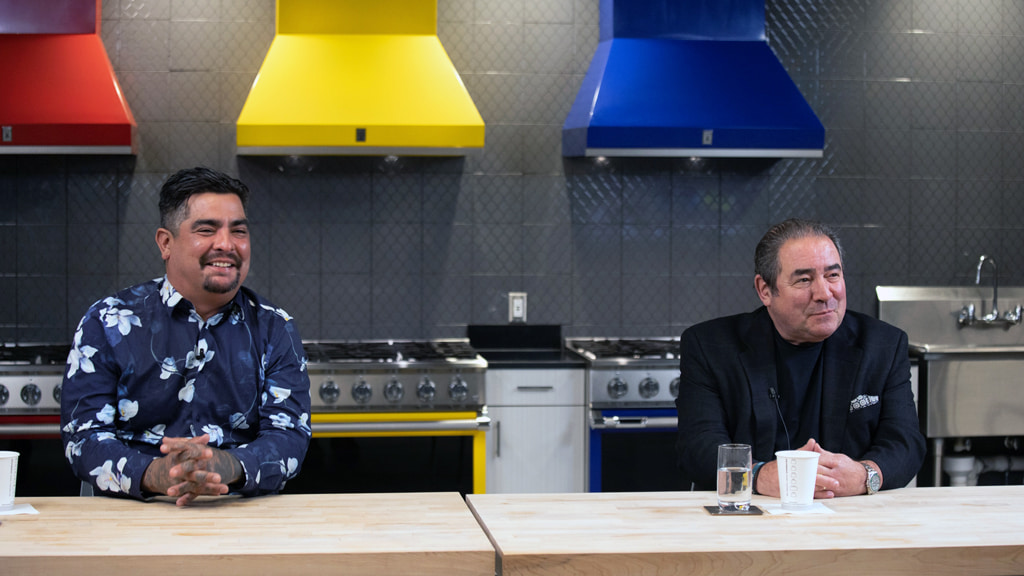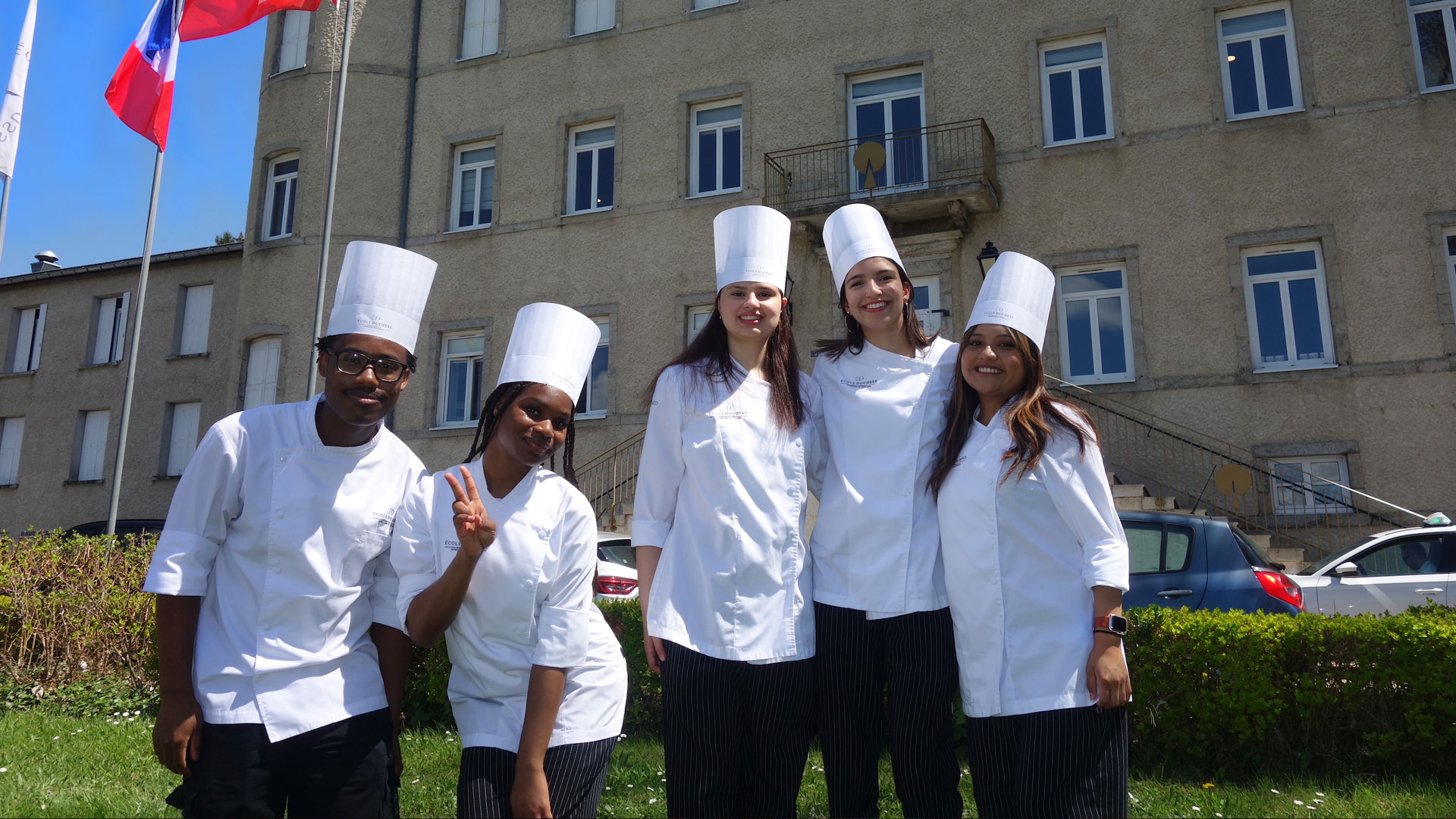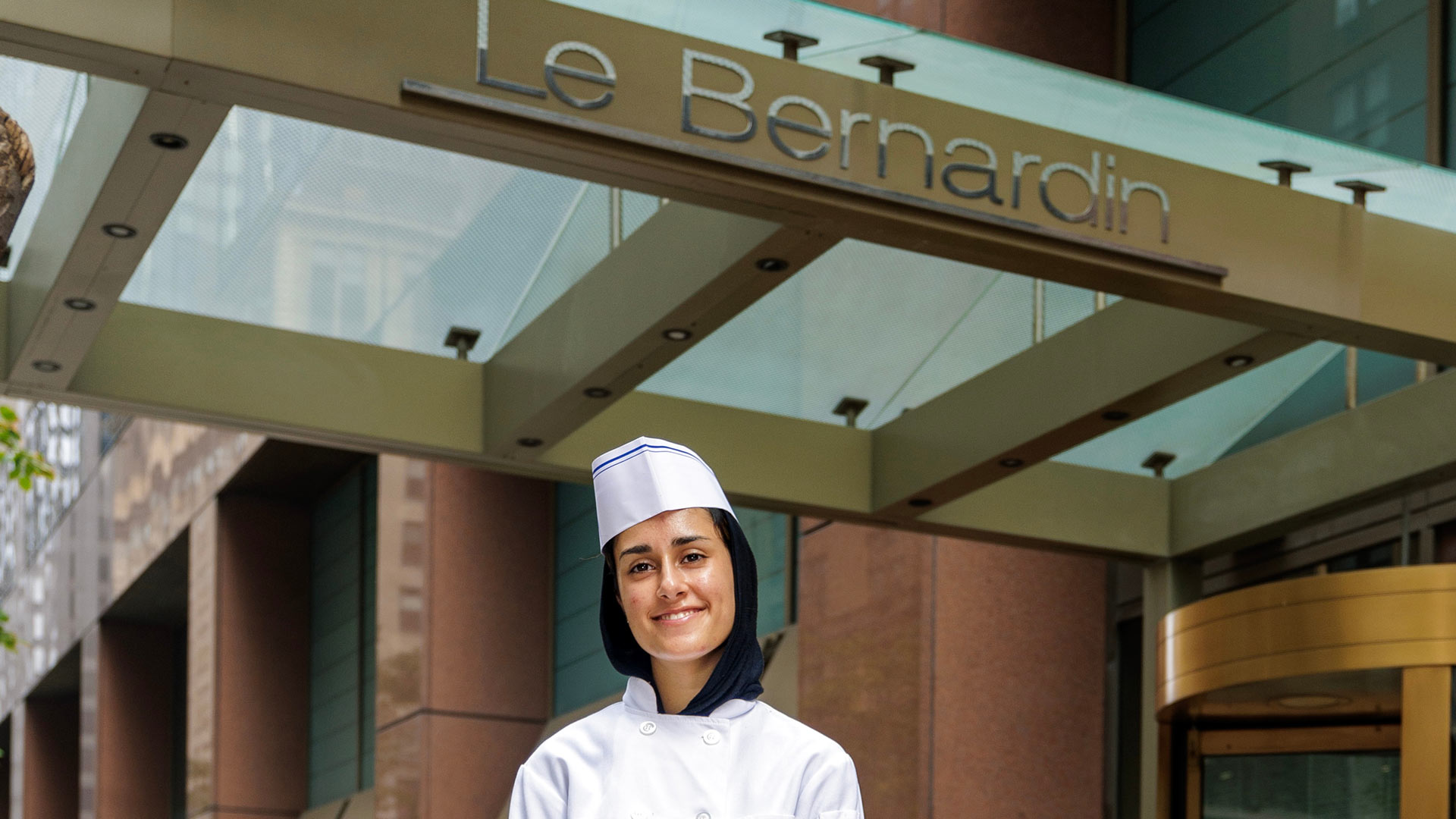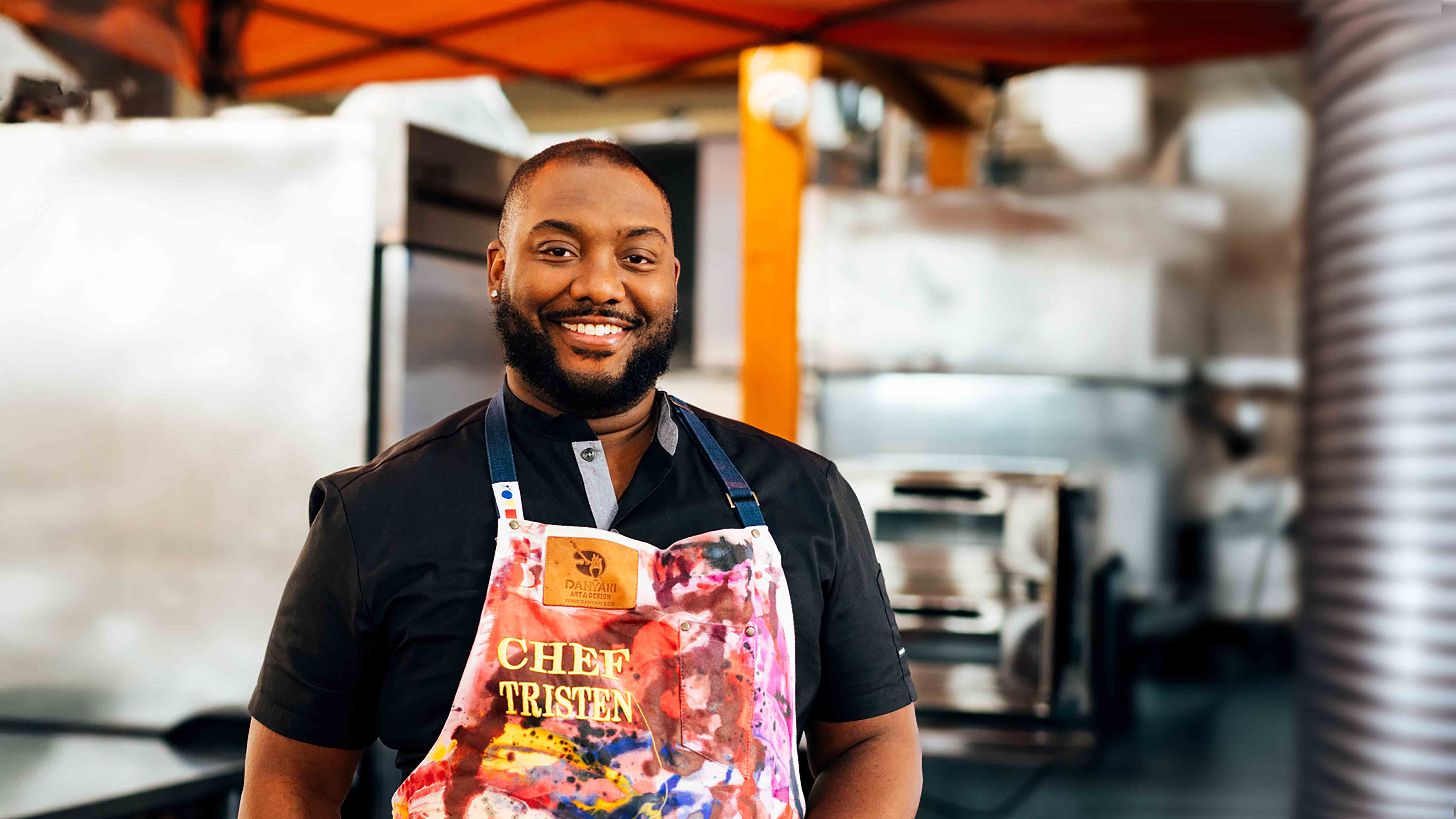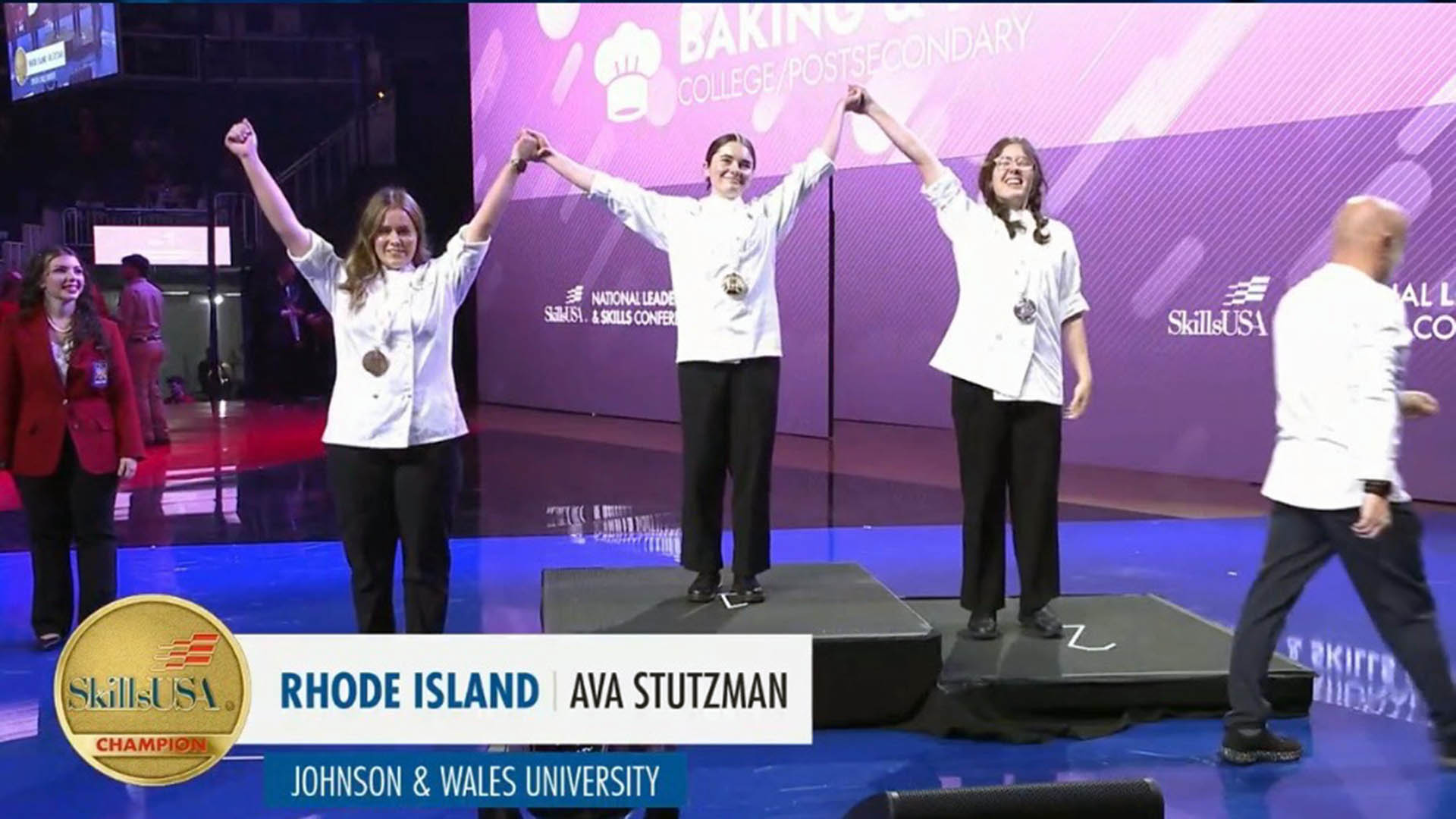FIT Symposium Examines How to Rethink the Culinary Model
“Never let a good crisis go to waste.” Winston Churchill was credited with saying this at the end of World War II, but it’s equally apt for a pandemic year that turned the world upside-down. JWU’s College of Food Innovation & Technology recently convened a panel discussion to take stock of the culinary industry as it examines the curve balls, unexpected challenges and potential for massive change that the last year has thrown its way. Keynote speakers Emeril Lagasse ’78, ’90 Hon. and Aarón Sánchez (both chefs and restaurateurs) summed it up by agreeing that change (good and bad) creates opportunity: “All we can do is move forward,” notes Lagasse.
Both chefs have seen massive, rapid-fire shifts in their business throughout the pandemic, and many of these pivots have helped them reassess and reprioritize the way they do business, from menu costing to payroll and restaurant floor plans.
“This ‘pause’ does make us rethink our models. We have to do better.” CHAMPE SPEIDEL
Sánchez’s pre-pandemic plan to open a restaurant in a converted gas station is moving forward with a greater emphasis on outdoor dining: “It’s going to be 70% outdoors, 30% indoors. Maybe this was some divine intervention of knowing what was going to happen, but I think the future is people wanting to be outside regardless.” Lagasse thinks that the shift to using shorter supply chains (rather than ingredients shipped in from all over the globe) will continue: “People are focused locally and regionally.”
The panel discussion analyzed the hard-earned lessons forced by the pandemic. Restaurateurs Champe Speidel ’00, ’16 Hon. of Persimmon (Providence, RI), Paul Kahan of One Off Hospitality Group (Chicago, Ill.), and Lindsay Tusk of Quince (San Francisco, Calif.) traded war stories and wisdom from an unprecedented year of upheaval and adaptation.
Entire business models were scrapped in favor of being “lean and mean” from an operations standpoint, noted Kahan, who closed his flagship restaurant, Blackbird, and pivoted the space to an at-home concept that could also handle nationwide delivery.
Tusk’s Michelin-starred restaurant, Quince, was temporarily moved to the restaurant’s farm in Bolinas, where the 25-acre space could better accommodate pandemic-required outdoor dining. (Quince later moved to a ranch in Napa Valley; plans are underway to bring it back to its San Francisco home base.) Cotogna, their Italian comfort food restaurant, began serving up meal kits and pantry staples like pasta and gelato, while Verjus, their walk-in wine bar, became a full-service grocery/wine shop and weekend farmer’s market.
Speidel began an ever-expanding at-home program offering pints of bolognese, clam sauce (choose from red or white), ice creams and bottled cocktails. (You can get Persimmon’s exquisitely-plated food to go, as well.)
“This is a real opportunity for people to understand that good food does cost a lot more.” PAUL KAHAN
“I think that the public has gotten a taste of chef-prepared foods in the comfort of their own home,” notes Tusk. “If restaurants can diversify their revenue streams — whether it be takeout, delivery, retail or e-commerce — they’re going to find themselves in a stronger position than just relying on guests coming to them.” Facing a restaurant shutdown and the unthinkable decision of having to furlough employees at the start of the pandemic, Tusk started Feed the Future, a 501(c)(3) focused on providing direct aid to restaurant workers (including employees and interns of Quince, Cotogna, and Verjus) and farmers.
“We actually found that a lot of the small farmers did really well because most people were shopping at farmer’s markets,” Tusk explains. To those farms lacking in established consumer relationships, Feed the Future helps provide “business or entrepreneurial skills for some small farmers that all of a sudden had to really pivot because they weren’t selling to restaurants anymore, and they had to go direct to consumer.”
The pandemic has also pushed the hidden costs of food to the fore. “This is a real opportunity for people to understand that good food does cost a lot more, and for us to charge a lot more for that food and definitely a result that I think will be long-standing,” explains Kahan.
For Speidel, the silver lining has been a chance to reassess the work/life balance he can offer his employees: “‘Why don’t we see what four days is like. Can we make our money in that?’ This ‘pause’ does make us rethink our models. We have to do better.”
Doing better also means ensuring equality and equity in the work environment. “Hate has no place in food,” as Assistant Professor Matthew Britt '19, M.Ed., CEC, put it to the panelists. All agreed that the past year has necessitated some difficult conversations: “This year has been about listening,” notes Tusk. “The most important thing is starting in culinary schools and starting early in the way we teach how kitchens work and how restaurants work and changing that for the better is definitely something moving forward,” adds Kahan.
It’s all in the service of rebuilding a healthier industry: “The model was a little bit broken, and we now have an opportunity to really re-examine it and innovate and address some very long-standing issues,” notes Tusk. “I think it will be a happier place.”
Follow Emeril, Aarón Sánchez, Persimmon, One Off Hospitality and Quince on Instagram.
Catch up on the video of the Symposium:
